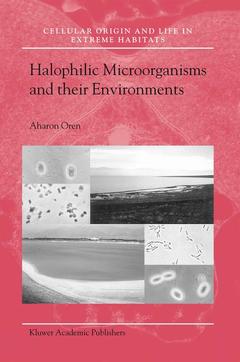"This water" he told me, "runs out to the eastern region, and flows into the Arabah; and when it comes into the sea, into the sea of foul waters [i. e. , the Dead Sea], the water will become wholesome. Every living creature that swarms will be able to live wherever this stream goes; the fish will be very abundant once these waters have reached there. It will be wholesome, and everything will live wherever this stream goes. Fishermen shall stand beside it all the way from En-gedi to En-eglaim; it shall be a place for drying nets; and the fish will be of various kinds [and] most plentiful, like the fish of the Great Sea. " Ezekiel?s prophecy (Ezekiel 47: 8-10) for revival and purification of the Dead Sea waters This new book on "Halophilic Microorganisms and their Environments" is the fifth volume in the COLE series (Cellular Origin and Life in Extreme Habitats (see: http://www. wkap. nl/prod/s/COLE). In the previous books we covered aspects of enigmatic microorganisms, microbial diversity, astrobiology, and symbiosis, so this book on halophilic microbes adds a fitting link to the rest of series' books. Since ancient times hypersaline habitats have been considered extreme environments, and some were thought not to sustain life at all. Yet, every organism requires salt for its existence. Salty places have been compared to an environment of extinction (e. g. , the Dead Sea).




